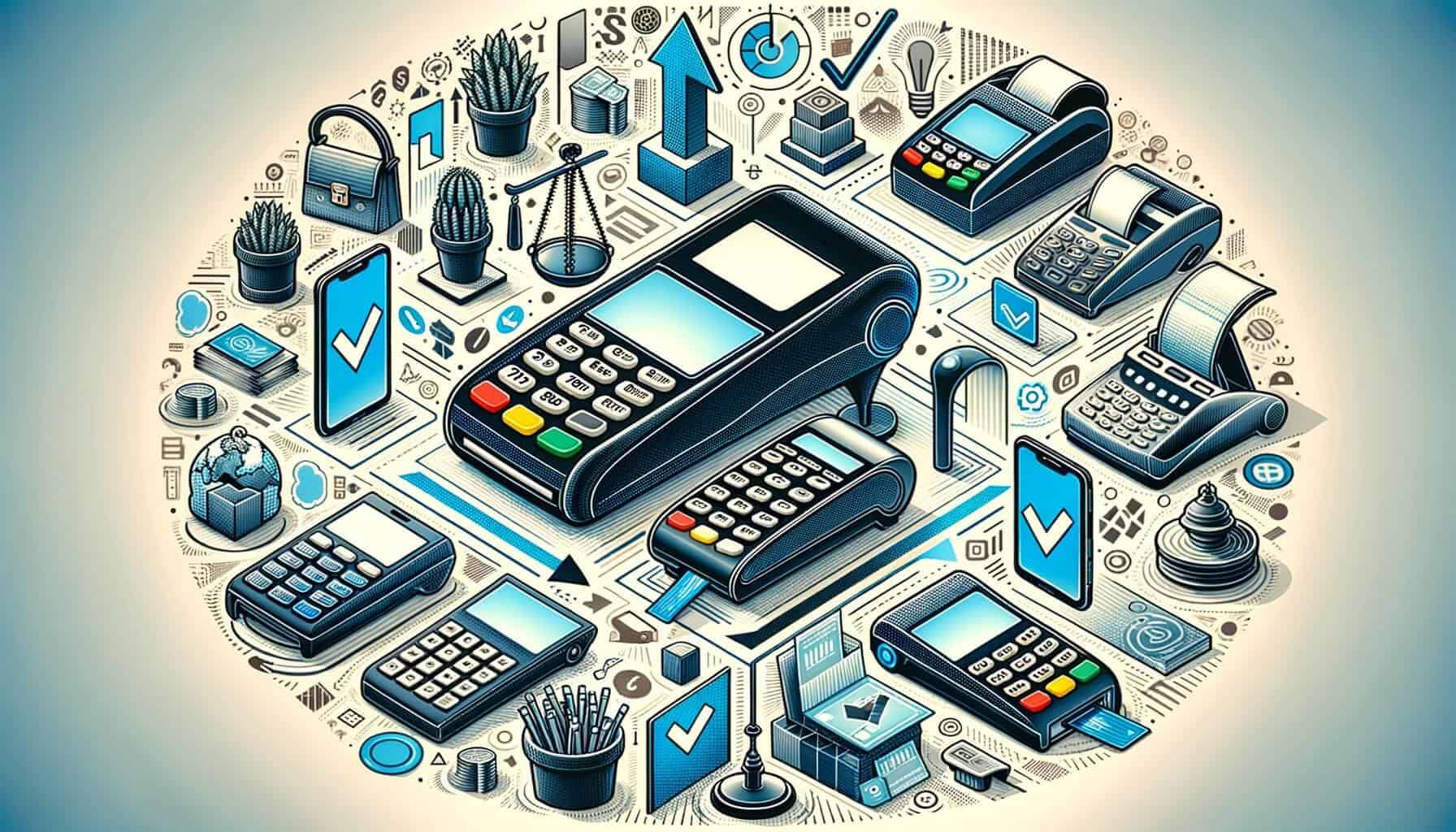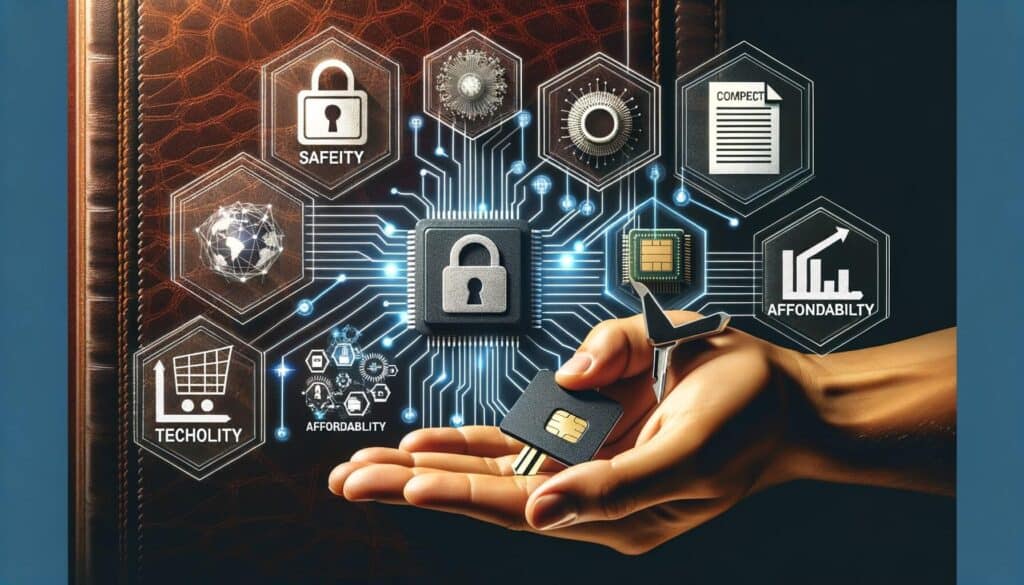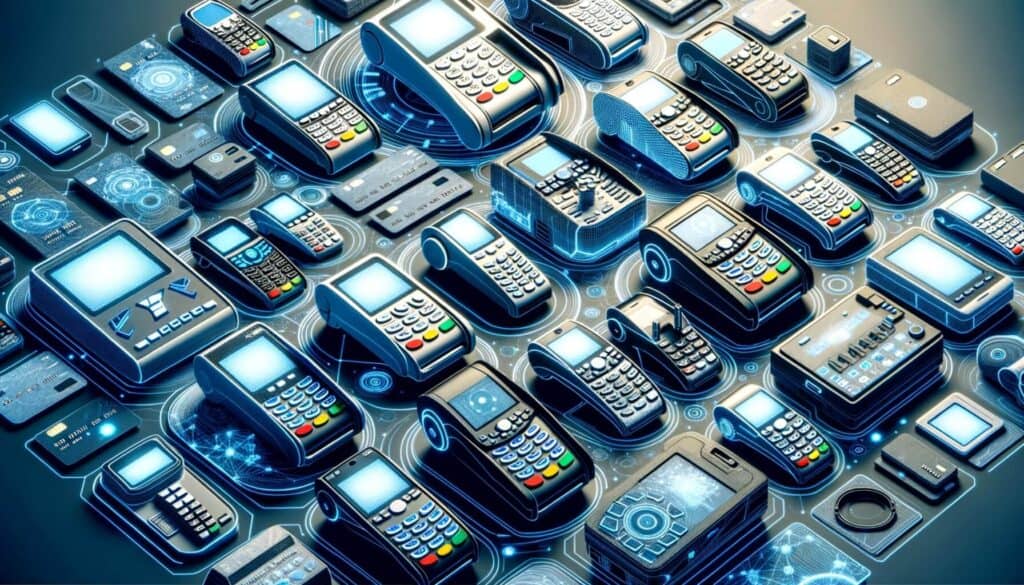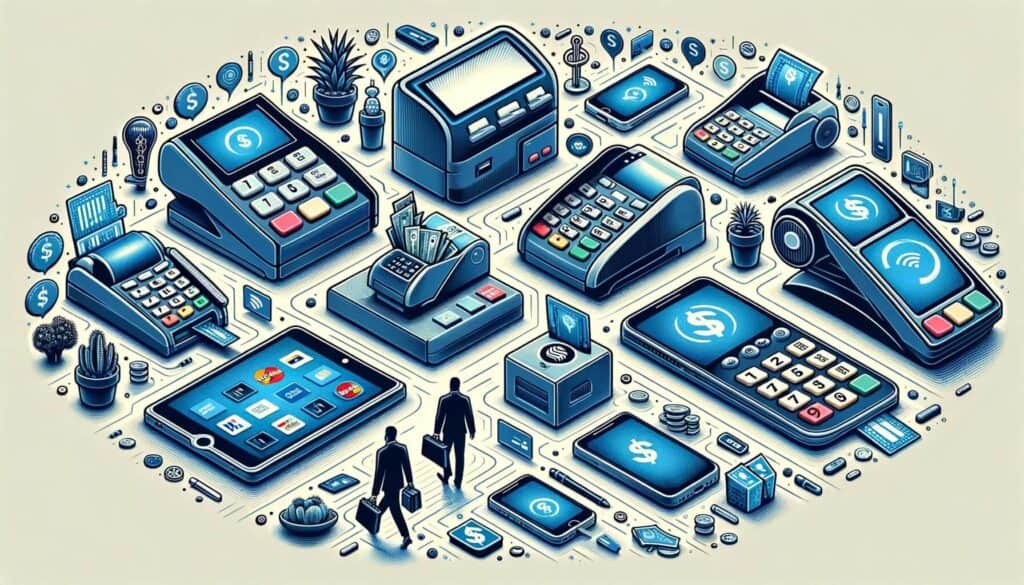
By Carol Peters December 27, 2024
In today’s digital age, credit card payments have become the norm for businesses of all sizes. Whether you run a small retail store or an e-commerce website, having the right credit card processing equipment is crucial for the success of your business. The right equipment not only ensures smooth and secure transactions but also enhances customer satisfaction and boosts your bottom line.
Selecting the right credit card processing equipment can be a daunting task, considering the wide range of options available in the market. From point-of-sale (POS) systems to mobile credit card processing and virtual terminals, each type of equipment has its own set of advantages and disadvantages. To make an informed decision, it is important to consider various factors and understand the different types of credit card processing equipment available.
Factors to Consider When Choosing Credit Card Processing Equipment

Before diving into the different types of credit card processing equipment, it is important to consider the factors that should influence your decision-making process. Here are some key factors to keep in mind:
- Business Type and Size: The nature and size of your business play a crucial role in determining the type of credit card processing equipment you need. For instance, a small retail store may require a simple POS system, while an e-commerce business may benefit from a virtual terminal.
- Cost: Cost is another important factor to consider. Different types of credit card processing equipment come with varying price tags, and it is important to choose one that fits within your budget. However, it is also important to consider the long-term benefits and return on investment (ROI) that the equipment can provide.
- Security: With the increasing prevalence of credit card fraud and data breaches, security should be a top priority when selecting credit card processing equipment. Look for equipment that is EMV chip-enabled and offers encryption and tokenization to protect sensitive customer data.
- Integration: If you already have existing systems in place, such as a point-of-sale or inventory management system, it is important to choose credit card processing equipment that seamlessly integrates with these systems. This will help streamline your operations and avoid any compatibility issues.
- Customer Experience: The ease of use and convenience of the credit card processing equipment can greatly impact the customer experience. Look for equipment that offers a user-friendly interface, fast transaction processing, and support for various payment methods.
Types of Credit Card Processing Equipment: A Comprehensive Overview

Now that we have discussed the factors to consider, let’s delve into the different types of credit card processing equipment available in the market.
1. Point-of-Sale (POS) Systems: The Pros and Cons
Point-of-sale (POS) systems are a popular choice for businesses that have a physical location, such as retail stores and restaurants. These systems typically consist of a combination of hardware and software that allows businesses to accept credit card payments, manage inventory, and generate sales reports.
Pros:
- Streamlined operations: POS systems integrate various functions, such as inventory management and sales reporting, into a single system, making it easier to manage your business.
- Enhanced customer experience: POS systems offer features like digital receipts, loyalty programs, and customer relationship management (CRM) tools, which can improve the overall customer experience.
- Detailed reporting: POS systems provide detailed sales reports, allowing you to analyze your business performance and make informed decisions.
Cons:
- Cost: POS systems can be expensive, especially for small businesses with limited budgets. In addition to the initial investment, there may be ongoing fees for software updates and technical support.
- Learning curve: POS systems can be complex to set up and use, requiring training for you and your staff. This can be time-consuming and may lead to initial disruptions in your business operations.
2. Mobile Credit Card Processing: A Convenient Solution for On-the-Go Businesses
Mobile credit card processing has gained popularity in recent years, especially among businesses that operate on-the-go, such as food trucks, event vendors, and service providers. This type of equipment allows businesses to accept credit card payments using a smartphone or tablet, coupled with a card reader attachment.
Pros:
- Portability: Mobile credit card processing equipment is lightweight and portable, allowing you to accept payments anywhere, anytime.
- Cost-effective: Mobile credit card processing equipment is often more affordable compared to other options, making it a cost-effective solution for small businesses.
- Quick setup: Setting up mobile credit card processing equipment is usually quick and easy, requiring minimal technical knowledge.
Cons:
- Reliance on internet connection: Mobile credit card processing relies on a stable internet connection. In areas with poor connectivity, this can lead to transaction delays or failures.
- Limited functionality: While mobile credit card processing equipment can handle basic transactions, it may lack advanced features like inventory management or detailed reporting.
3. Virtual Terminals: Streamlining Online Credit Card Payments
Virtual terminals are ideal for businesses that primarily operate online or over the phone, such as e-commerce websites, mail-order businesses, and call centers. A virtual terminal allows businesses to manually enter credit card information into a secure online portal to process payments.
Pros:
- Flexibility: Virtual terminals allow businesses to accept credit card payments from anywhere with an internet connection, making it convenient for remote or online businesses.
- Easy setup: Setting up a virtual terminal is typically straightforward and requires minimal hardware or software installation.
- Secure transactions: Virtual terminals often come with built-in security features, such as encryption and tokenization, to protect customer data.
Cons:
- Manual entry: Virtual terminals require manual entry of credit card information, which can be time-consuming and prone to human error.
- Limited in-person capabilities: Virtual terminals are not designed for face-to-face transactions, so businesses that require in-person payments may need additional equipment.
4. EMV Chip Card Readers: Enhancing Security and Reducing Fraud
EMV chip card readers have become the standard for credit card processing equipment due to their enhanced security features. These readers are designed to read the embedded chip on credit and debit cards, providing an added layer of protection against fraud.
Pros:
- Increased security: EMV chip card readers offer better protection against counterfeit cards and fraudulent transactions compared to traditional magnetic stripe readers.
- Liability shift: Since the introduction of EMV chip technology, the liability for fraudulent transactions has shifted to the party with the least secure technology. By using EMV chip card readers, businesses can protect themselves from liability in case of fraud.
- Customer trust: EMV chip technology is widely recognized and trusted by consumers, which can help build trust and credibility for your business.
Cons:
- Cost: Upgrading to EMV chip card readers can be costly, especially for businesses with multiple payment terminals. However, the potential cost savings from reduced fraud can outweigh the initial investment.
- Longer transaction times: EMV chip card transactions typically take longer to process compared to magnetic stripe transactions, which can lead to longer wait times for customers.
5. Contactless Payment Solutions: The Future of Credit Card Processing
Contactless payment solutions, such as Near Field Communication (NFC) and mobile wallets, are gaining popularity due to their convenience and speed. These solutions allow customers to make payments by simply tapping their credit card or mobile device on a contactless-enabled reader.
Pros:
- Speed and convenience: Contactless payments are quick and easy, reducing transaction times and improving the overall customer experience.
- Enhanced security: Contactless payments use tokenization and encryption to protect customer data, making them a secure option for businesses.
- Future-proofing: As contactless payment technology continues to evolve, businesses that adopt this technology are well-positioned for the future.
Cons:
- Limited adoption: While contactless payment solutions are gaining traction, not all customers have contactless-enabled cards or mobile devices, which can limit their usability.
- Equipment compatibility: Businesses need to ensure that their credit card processing equipment supports contactless payments, which may require additional hardware or software upgrades.
Comparing Different Credit Card Processing Equipment Providers

Once you have determined the type of credit card processing equipment that best suits your business needs, it is important to compare different providers to find the right fit. Here are some factors to consider when evaluating different providers:
- Pricing: Compare the fees and rates charged by different providers, including transaction fees, monthly fees, and any additional charges for hardware or software.
- Contract terms: Review the contract terms and conditions, including the length of the contract, cancellation fees, and any hidden fees.
- Customer support: Consider the level of customer support offered by the provider, including availability, response times, and technical support options.
- Integration capabilities: If you have existing systems in place, ensure that the provider’s equipment can seamlessly integrate with your current setup.
- Reputation and reviews: Research the provider’s reputation and read customer reviews to get a sense of their reliability and customer satisfaction.
Frequently Asked Questions (FAQs)
Q1. What is the best credit card processing equipment for small businesses?
The best credit card processing equipment for small businesses depends on their specific needs and budget. POS systems and mobile credit card processing are popular choices for small businesses.
Q2. How much does credit card processing equipment cost?
The cost of credit card processing equipment varies depending on the type of equipment and the provider. POS systems can range from a few hundred dollars to several thousand dollars, while mobile credit card processing equipment is generally more affordable.
Q3. Can I use my existing credit card processing equipment with a new provider?
In some cases, you may be able to use your existing credit card processing equipment with a new provider. However, compatibility may vary, so it is important to check with the new provider before making any decisions.
Q4. How long does it take to set up credit card processing equipment?
The setup time for credit card processing equipment depends on the type of equipment and the provider. Mobile credit card processing equipment typically has a quick and easy setup process, while POS systems may require more time for installation and training.
Q5. What security measures should I look for in credit card processing equipment?
When selecting credit card processing equipment, look for features like EMV chip-enabled readers, encryption, and tokenization to protect customer data. It is also important to choose a provider that is compliant with Payment Card Industry Data Security Standard (PCI DSS) requirements.
Conclusion
Selecting the right credit card processing equipment is crucial for the success of your business. By considering factors such as your business type and size, cost, security, integration, and customer experience, you can make an informed decision that meets your specific needs. Whether you choose a POS system, mobile credit card processing, virtual terminals, EMV chip card readers, or contactless payment solutions, each type of equipment offers its own set of advantages and considerations.
By comparing different providers based on pricing, contract terms, customer support, integration capabilities, and reputation, you can find the right partner to meet your credit card processing needs. Remember, investing in the right credit card processing equipment not only ensures smooth and secure transactions but also enhances customer satisfaction and boosts your bottom line.
